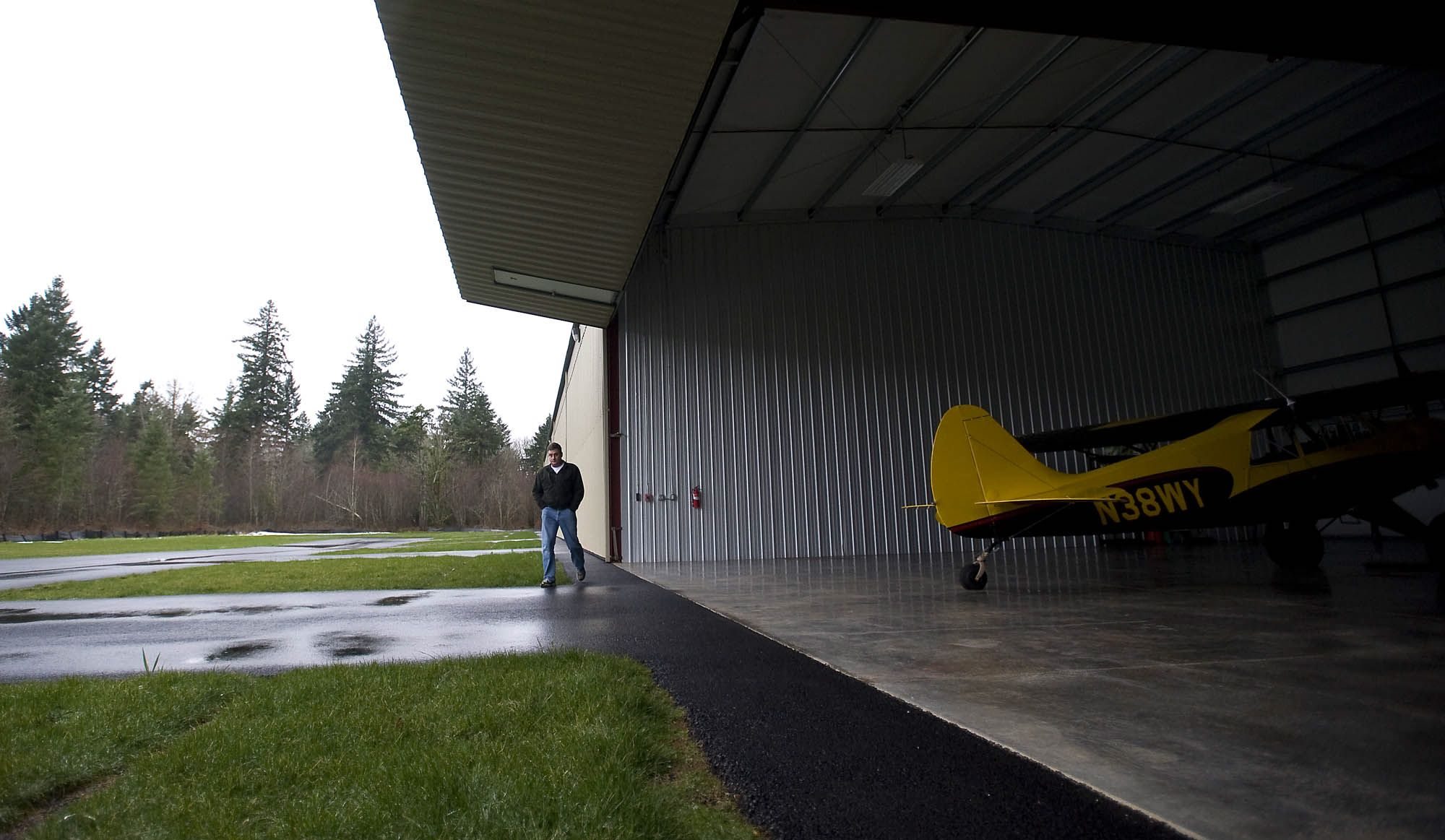Camas and Washougal residents may soon learn whether the Port of Camas-Washougal will launch a $10 million project to improve Grove Field Airport.
But even if the port’s elected three-member commission declines to dance with the Federal Aviation Administration — a distinct possibility given the concerns expressed by commissioners so far — the controversial issue won’t be going away anytime soon.
For example, two Camas residents — both backers of accepting FAA money to upgrade Grove Field — are challenging incumbent Commissioner Bill Ward, who has questioned the merits of the project, in the November general election.
Then there are the documents assessing the environmental impacts of the Camas airport project, which could be used later even if the port chooses not to act now.
For now, the port commission is set to invite another round of public comments on Grove Field during its 5 p.m. July 5 meeting.
It may also decide whether to move forward with the airport improvements during that meeting, said Commissioner Mark Lampton, who has concerns about the long-term implications of the airport project.
Key documents released
At issue is whether the port should accept federal money — and the obligations that come with it — to boost safety at the airport and to increase the airport’s role as an economic resource. That work would include reconstructing a portion of Delp Road into a tunnel that would pass under a longer and wider runway.
Backers say the improvements would create construction jobs, increase airport safety and preserve airport operations well into the future. Critics say getting on board with the FAA would result in a loss of local control over the airport. They also say the airport is safe as it stands and that improving it would have limited public benefit.
Commissioners are reviewing this now because the FAA is releasing key documents examining the airport and the proposed upgrades. The port has one of those documents — the final environmental assessment — and expects to receive the “finding of no significant impacts” document this week.
The upshot of those documents is that the proposed airport improvements would do no lasting harm to the environment. That means the port wouldn’t have to take action to soften the environmental blow of the project, such as replacing a lost wetland.
Release of the documents also clears the way for the port commission to decide whether it wants to apply for FAA grant money to begin rebuilding the airport. The FAA funds would cover most of the cost of the work. The entire project, including the tunnel, runway and other elements, could take up to six years to complete, said David Ripp, executive director for the port.
The first phase would reroute a portion of Delp Road into a tunnel that would pass under a longer and wider runway. The tunnel option, endorsed by the port, would have the least impact on the surrounding area. Other, less expensive alternatives would bring airport activities closer to houses in the area.
“One of the realignments (of Delp Road) went closer to homes and actually bisected a driveway,” Ripp said.
Ripp said the port would have to apply for FAA funds in phases as it tackles each piece of the airport project. Accepting FAA funds would commit the port-owned airport to operate for the next 20 years.
Safety standards
Grove Field handles small aircraft, such as a single-engine Cessna, with approach speeds under 91 knots, wingspans up to 49 feet and a maximum weight of 12,500 pounds. Improvements to the airport would enable it to handle aircraft with approach speeds between 91 knots and 121 knots. However, the size of the aircraft that could land and take off at Grove Field would not change.
Grove Field has several design problems, according to FAA’s final environmental assessment. The width of the airport’s runway, for example, is 40 feet. The standard is 60 feet. The FAA recommends a runway length of 3,070 feet. The length of Grove Field’s runway is 2,620 feet. At night, its runway length is reduced to 1,804 feet because of inadequate lighting.
While the airport has 79 hangars, 21 tie-down spaces and a modernized fueling station, it “operates below FAA minimum safety standards and generally lacks up-to-date facilities,” according to the environmental assessment. The airport was built in 1946 by Ward Grove, an avid pilot and longtime Camas resident.
Years in the works
If the port commission commits to the project, then the FAA would pick up 95 percent of the cost. The port and the Washington Department of Transportation would cover the remaining 5 percent, each kicking in 2.5 percent. The port has already contributed more than its 2.5 percent share by spending $399,000 to purchase property at the west end of the airport to provide a safety buffer for pilots during takeoffs.
The port’s purchase of property and its efforts to plan for long-term upgrades were spearheaded by a previous commission. They also reflect the fact that the port has been dealing with the future of Grove Field for some time.
In December 2009, the port’s board voted 2-1 to move ahead with plans to improve the airport. But that was before two new commissioners — Lampton and Commissioner Bill Macrae-Smith — joined the three-member board in January 2010.
Ward, who’s up for re-election this year, cast the dissenting vote in December 2009.
The time to collect formal public testimony on the Grove Field project has ended, so comments collected during the July 5 commission meeting won’t be added to the final documents assessing the project.
Macrae-Smith, port commission president, said the point of the July 5 meeting is to “give the public a final shot” to weigh in on the matter before the commission makes a decision.
All three of the current commissioners have expressed concerns about signing the port onto the project. Lampton questions the future viability of general aviation and whether there will be enough growth in the industry to justify expanding the airport.
He said he also doesn’t trust that the FAA money will be available to complete the project in six years. That, coupled with the timing of capital projects, could extend the port’s relationship with the FAA beyond 20 years, he said. “I have a great deal of concern about Washington, D.C., and their ability to tell me what tomorrow’s going to bring,” Lampton said.
Ward said Grove Field is safe and usable in its current shape. He said he’s worried about “obligating the port to a large financial commitment” for a project where “the benefits to the community at large are limited.”
Port seat contested
Ward said he’s not surprised that he faces opposition in his bid for re-election to the port commission’s District No. 2 position.
His challengers are David Luse and Neil Cahoon. Neither of them could be reached for comment in time for this story. Luse, a flight instructor at Grove Field since 1984, is a past president and member of the Camas-Washougal Aviation Association. He has said the $10 million plan for Grove Field improves the facility at a reasonable cost using mostly fees on airplane fuel, pilots and airport users, which are dedicated to improving the nation’s airport system.
Cahoon is listed as a 2010 president of the Camas-Washougal Aviation Association in one of the group’s newsletters. In March, The Columbian published a letter to the editor by Cahoon supporting the FAA upgrades. Asking port commissioners to accept the FAA funding “is the responsible thing to do and ensures that our tax dollars are returned to our community rather than spent upgrading someone else’s airport,” Cahoon wrote.
Whatever happens, Macrae-Smith said, the commission “has no plan to close the airport,” noting the port has signed long-term leases for hangars at Grove Field. “The airport is there to stay as far as we’re concerned,” Macrae-Smith said.




